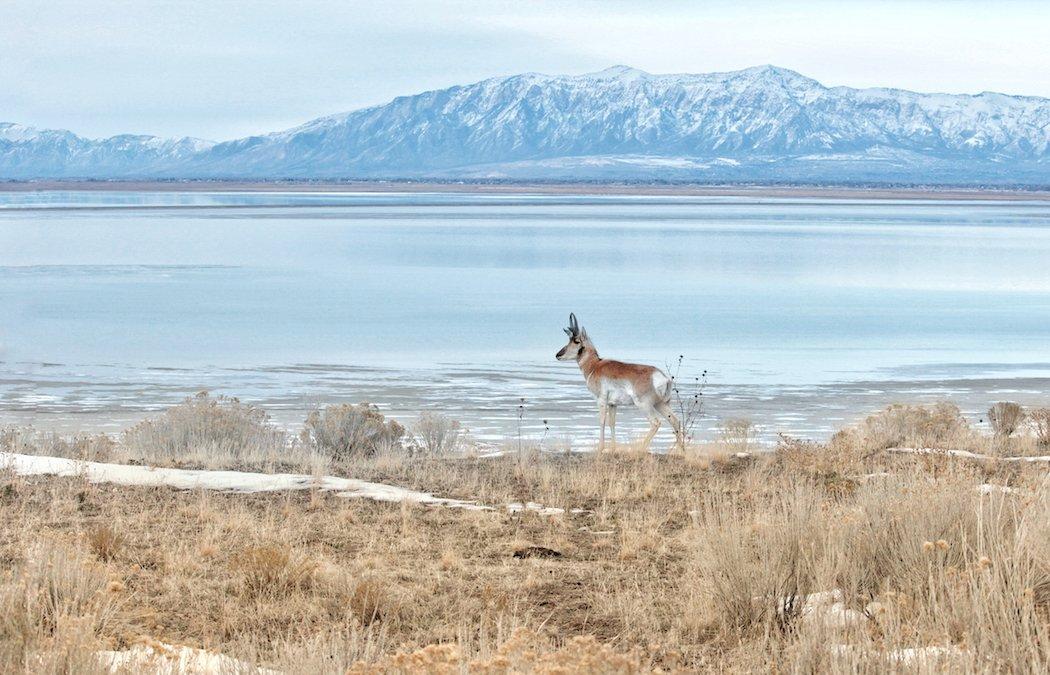Do You Use This Tactic?
Approached in a straight-forward manner, bowhunting pronghorns can prove one of the sport's greatest challenges. I'm, of course, talking in terms of classic spot-and-stalk hunting. Most early archery pronghorn success arrives through guarding water -- a dirt-dam water-hole, float-equipped stock tank, windmill trough or natural spring.
Finding watering sites visited regularly by speed goats (or by a particular buck you've set your sights on) becomes priority No. 1 in this business. This involves careful scouting, first seeking pronghorn concentrations, and then observing them from a distance to determine where they're drinking -- or tracing game trails leading to water in rougher country. Man-made water is most common, but don't overlook subtle natural sites such as small springs or "buffalo wallows" that puddle water during thunderstorms. Also, use hydro maps to find likely sources.
Don't Miss: Hunting Pronghorn Antelope on the Prairie
Once you've decided where your odds of ambush are greatest, determine how to best conceal yourself for an undetected shot. Windmill towers can easily be fitted with a treestand. Pop-up blinds are fast and easy, but set up early to allow goats time to grow accustomed to them, adding steel T-posts and barbed wire when necessary to protect against icky cattle. Unfortunately, pop-ups leave you open to theft in public areas. In this case excavated pit blinds are the best approach (check regulations carefully regarding public lands, or ask landowner permission on private ground). A proper pit blind involves a lot of backbreaking work but is time well spent.
The goal is a pit deep enough that your bow handle just clears its front lip while sitting and at full draw, large enough to allow bow clearance to all likely shooting angles and including an incorporated seat at its rear. Loosened dirt piled behind the pit can create a backdrop and vegetation anchor. Place brush and grass around the blind strategically or create a tree-limb frame to support natural materials, creating shade and concealment from antelopes' sharp eyes, leaving ports open to areas likely to present shooting opportunities.
Don't Miss: 12 Facts About Pronghorns
Bowhunting water is a dawn-to-dusk proposition, as antelope might show up at any hour. Take a lunch and plenty of fluids (it will be sweltering inside a blind). Treestand sitters might utilize a stand umbrella, and should wear plenty of sunscreen. It's also a good idea to keep a fat novel handy to occupy yourself during long summer hours.
Shot timing is super critical to success. Pronghorns are tightly wound while visiting water and quite adept at dodging well-directed arrows. Antelope become vulnerable only during the 30 seconds they're actually drinking, heads down and neck muscles working. But beware, bucks will often engage in many false starts before settling, jerking their heads up repeatedly trying to catch an attacker off guard. Once they begin tanking up, you can draw at your leisure and take your time shooting.
The scorching sun of August and early September tips the odds of bowhunting success firmly in your favor. Scout diligently to discover productive water, conceive a reasonable hide, and rest assured, given enough time they'll come. It's then only a matter of straight shooting to achieve your pronghorn dream.
Don't Miss: How to Stalk a Pronghorn Antelope
Editor's Note: This was originally published on July 24, 2012.







